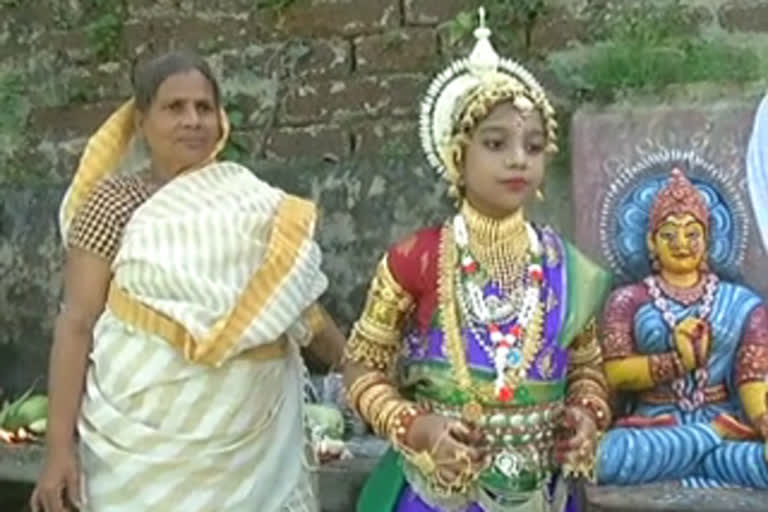Puri: On the occasion of Dussera festival in the autumn season, the young girls of the ‘Sevayat’ (Servitor) community in Puri wear traditional attires and ornaments and engage themselves in the traditional ritual with the hope of finding a suitable groom for themselves.
The traditional ritual has been practised for hundreds of years and it is still observed by the servitor community. About twenty-one days before the autumn festival and after they complete sacrificial worship, these young girls are regarded as “netas” during the last three days from the fifth day of the bright fortnight of the Odia month of Aswin up to the seventh day.
They wear a long silken cloth around their waist, tucked into the waistband similar to men's attires along with many traditional ornaments. During this period they worship mother Goddess Brundabati on the bank of Markanda pond as per their family tradition. The ‘Neta’ girls worship before the Goddess Brundabati and sing sacrificial songs before the Goddess.
Read:Odisha govt Asst Executive Engineer owns 48 one-bedroom flats
The ritual is based on the myth that Goddess Parvathi worshipped in a similar way to marry Lord Shiva. Girls in Sevayat community dress up with fancy attire and ornaments. They carry pumpkins, dried turmeric pieces, ‘jahni’, maize, cucumber, coconut and offer worship on the bank of Markanda pond. While they offer worship on the bank of the pond, they are accompanied by their mothers and grandmothers.
The ‘Neta’ girls sing various religious songs eulogizing the act of sacrifice while making obeisance before the goddess. On the eighth day of the bright fortnight, they visit Lord Markandeya and immerse the materials used in the worship to mark the end of their religious vow. However, this ritualistic practice is restricted to the servitor community only.
After completion of their religious worship, the ‘Neta’ girls visit the houses of their relatives. According to the opinion of some research scholars, this tradition has continued since the days of King Choda Gangadev of the Ganga dynasty. Nitei Dhobani is the founder of this tradition.
Also read: CHSE Odisha releases timetable, guidelines for optional exam 2020



